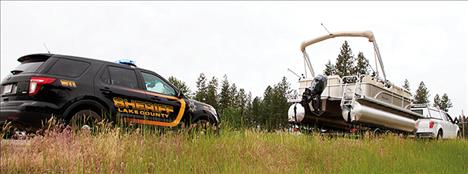AIS efforts ramping up, paying off
Hey savvy news reader! Thanks for choosing local.
You are now reading
1 of 3 free articles.
POLSON – The state’s anti-aquatic invasive species efforts are paying off.
On May 21, a boat headed to the Flathead Valley was stopped on the Blackfeet Reservation in Seville and found to have non-native mussel remnants, i.e. byssal threads that mussels use to attach to various objects including boats.
According to a press release, a Montana resident purchased the boat in Michigan with the intent of selling it in Montana. The owner washed the boat at a car wash to rid it of mussels but did not have it professionally decontaminated. The byssal threads were found near an intake on the boat, and a zebra mussel shell was found in one of the boat’s compartments.
The boat’s owner agreed not to launch the boat for 30 days to ensure no risk to local waters, the release stated.
The state requires all watercraft coming into the state or crossing the Intercontinental Divide to be inspected following the discovery of AIS larvae at Tiber Reservoir southeast of Shelby last year.
A new state law has resulted in doubling of the AIS inspection stations from 17 to 34 this year, but Dona Rutherford, director of the Blackfeet Fish and Wildlife Department, said “it is concerning that a perimeter station did not detect and decontaminate this boat before it reached the borders of the Blackfeet Reservation.”
The find on the Blackfeet Reservation wasn’t the only one, however. Over Memorial Day weekend, two boats carrying mussels were stopped in eastern Montana.
Inspection stations have been set up across the state, including one at Ravalli where Lake County Sheriff ’s Deputy Steven Larson pulled over a boat on June 8 that failed to stop. Larson made the boat’s owner return to the inspection station, where it was found with standing water but no mussels or milfoil, according to Thomas Woolf, the state’s AIS bureau chief.
Watercraft owners are encouraged to be vigilant to make sure their equipment is mussel-free. “Clean, drain and dry” is a common theme being touted, but drying a boat for 30 days is the best way to ensure it is mussel-free, said Tom McDonald, director of the Confederated Salish and Kootenai Tribes’ Fish, Wildlife, Recreation and Conservation Department. An informational website about the invasive mussels has been set up at: csktnomussels.org.

















